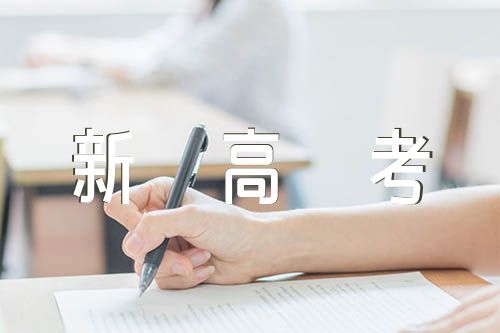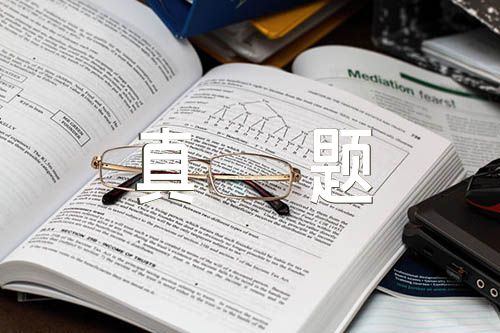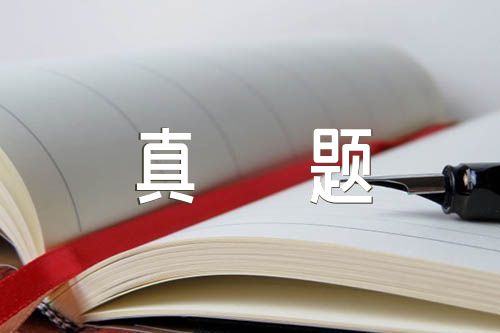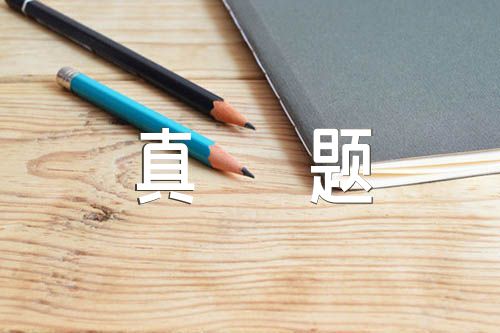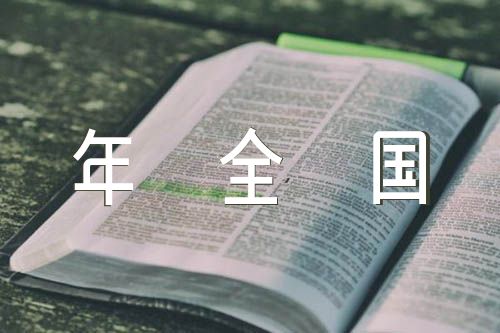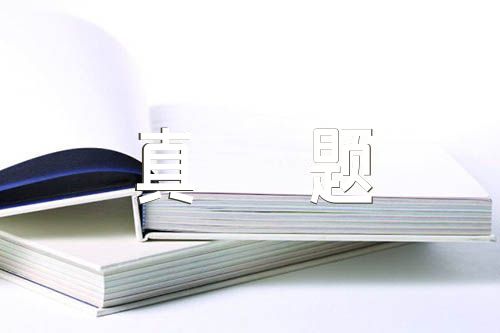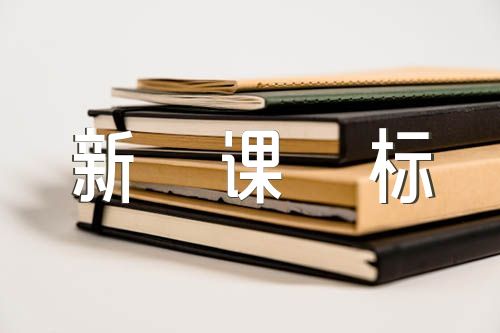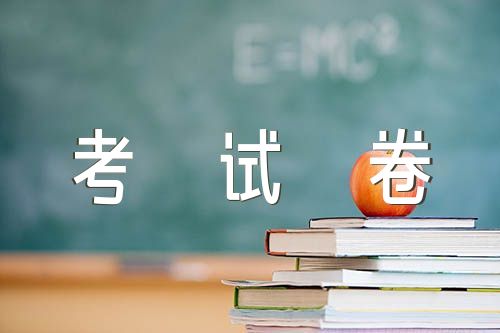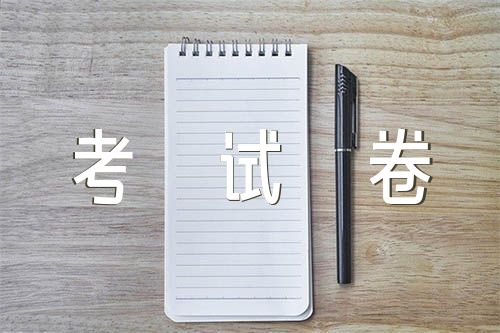【www.jianqiaoenglish.com--英语真题】
以下是小编为大家收集的2023年全国新高考一卷英语真题及参考答案范文(精选3篇),仅供参考,欢迎大家阅读。
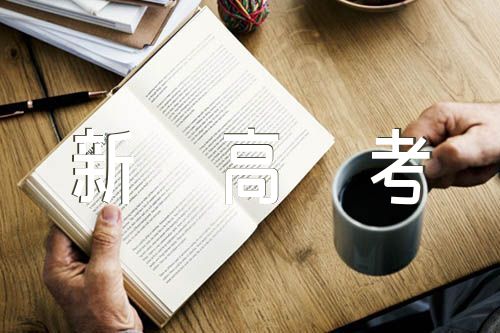
第1篇: 2023年全国新高考一卷英语真题及参考答案
本试卷共 12 页。考试结束后 , 将本试卷和答题卡一并交回。
注意事项 : 1. 答题前 , 考生先将自己的姓名、准考证号码填写清楚 , 将条形码准确粘贴在考生信息条形码粘贴区。
2. 选择题必须使用 2B 铅笔填涂 ; 非选择题必须使用 0.5 毫米黑色字迹的签字笔书写 , 字体工整、笔迹清楚。
3. 请按照题号顺序在答题卡各题目的答题区域内作答 , 超出答题区域书写的答案无效 ; 在草稿纸、试卷上答题无效。
4. 作图可先使用铅笔画出 , 确定后必须用黑色字迹的签字笔描黑。
5. 保持卡面清洁 , 不要折叠 , 不要弄破、弄皱 , 不准使用涂改液、修正带、刮纸刀。
第一部分 听力( 1-20 小题)在笔试结束后进行。(共 5 小题 ; 每小题 1.5 分 , 满分 7.5 分)
听下面 5 段对话。每段对话后有一个小题 , 从题中所给的 A 、 B 、 C 三个选项中选出最佳选项。听完每段对话后 , 你都有 10 秒钟的时间来回答有关小题和阅读下一小题。每段对话仅读一遍。
例: How much is the shirt?
A. ?19.15. B. ?9.18. C. ?9.15.
答案是C。
1. 【此处可播放相关音频,请去附件查看】
What will Jack probably do this weekend?
A. Go camping. B. Visit a friend. C. Watch a film.
2. 【此处可播放相关音频,请去附件查看】
What does the woman ask the man to do?
A. Take care of her bags.
B. Pack the food for her.
C. Check the train schedule.
3. 【此处可播放相关音频,请去附件查看】
When will the man see Bob?
A. This Friday. B. This Saturday. C. Next Monday.
4. 【此处可播放相关音频,请去附件查看】
Why does the man apologize?
A. For the terrible food.
B. For the overcharge.
C. For the waiter’s rudeness.
5. 【此处可播放相关音频,请去附件查看】
What are the speakers talking about?
A. Writing a book. B. Holding a celebration. C. Buying a present.
第二节(共 15 小题 ; 每小题 1.5 分 , 满分 22.5 分)
听下面一段较长对话,回答以下小题。【此处可播放相关音频,请去附件查看】
6. Why does Sara make the phone call?
A. To ask for advice. B. To arrange an outing. C. To cancel an appointment.
7. What does David want to do?
A. Go to a dinner party. B. Talk to Sara in person. C. Work on the new case.
听下面一段较长对话,回答以下小题。【此处可播放相关音频,请去附件查看】
8. Where is Jim now?
A. In a taxi. B. On a bus. C. In his office.
9. What is the woman’s suggestion?
A. Going to the city center.
B. Taking a short cut home.
C. Meeting Jim in the park.
听下面一段较长对话,回答以下小题。【此处可播放相关音频,请去附件查看】
10. What did Clara do at the weekend?
A. She planted vegetables.
B. She went to a yard sale.
C. She visited her grandpa.
11. What did Mark find inside one of the books he bought?
A. A plane ticket. B. A family photo. C. A post card.
12. Where does Mark live?
A. Los Angeles. B. Chicago. C. Philadelphia.
13. What is the relationship between Mark and Ashley?
A. Brother and sister. B. Husband and wife. C. Father and daughter.
听下面一段较长对话,回答以下小题。【此处可播放相关音频,请去附件查看】
14. What is probably the woman?
A. A teacher. B. A journalist. C. An athlete.
15. What does Victor find difficult as a member of the basketball team?
A. Adapting himself to the intense training.
B. Dealing with the pressure from the coach.
C.Regaining the skills learned in high school.
16. What does Victor say about the players on the team?
A. They are of the same age.
B. They are similar in character.
C. They are from different countries.
17. How does Victor feel about his team now?
A. It’s about to break up. B. It’s the best in Indiana. C. It’s getting stronger.
听下面一段独白,回答以下小题。【此处可播放相关音频,请去附件查看】
18. Who is Tom Hokinson?
A. Founder of a magazine. B. Publisher of a novel. C. Editor of a newspaper.
19. What do we know about the content of The Idler?
A. It’s old-fashioned. B. It’s wide-ranging. C. It’s student-targeted.
20. Why does the speaker give the talk?
A. To do a promotion. B. To discuss an issue. C. To introduce a lecturer.
第二部分 阅读 ( 共两节,满分 50 分 )
第一节 ( 共 15 小题 ; 每小题 2.5 分,满分 37.5 分 )
阅读下列短文,从每题所给的A、B、C、D四个选项中选出最佳选项。
A
Bike Rental & Guided Tours
Welcome to Amsterdam, welcome to MacBike. You see much more from the seat of a bike! Cycling is the most economical, sustainable and fun way to explore the city, with its beautiful canals, parks, squares and countless lights. You can also bike along lovely landscapes outside of Amsterdam.
Why MacBike
MacBike has been around for almost 30 years and is the biggest bicycle rental company in Amsterdam. With over 2,500 bikes stored in our five rental shops at strategic locations, we make sure there is always a bike available for you. We offer the newest bicycles in a wide variety, including basic bikes with foot brake (刹车), bikes with hand brake and gears (排挡), bikes with child seats, and children’s bikes.
Prices
Hand Brake, Three GearsFoot Brake, No Gears
1 hour?7.50?5.00
3 hours?11.00?7.50
1 day (24 hours)?14.75?9.75
Each additional day?8.00?6.00
Guided City Tours
The 2.5-hour tour covers the Gooyer Windmill, the Skinny Bridge, the Rijksmuseum, Heineken Brewery and much more. The tour departs from Dam Square every hour on the hour, starting at 1:00 pm every day. You can buy your ticket in a MacBike shop or book online.
21. What is an advantage of MacBike?
A. It gives children a discount. B. It offers many types of bikes.
C. It organizes free cycle tours. D. It has over 2,500 rental shops.
22. How much do you pay for renting a bike with hand brake and three gears for two days?
A. ?15.75. B. ?19.50. C. ?22.75. D. ?29.50.
23. Where does the guided city tour start?
A. The Gooyer, Windmill. B. The Skinny Bridge.
C. Heineken Brewery. D. Dam Square.
B
When John Todd was a child, he loved to explore the woods around his house, observing how nature solved problems. A dirty stream, for example, often became clear after flowing through plants and along rocks where tiny creatures lived. When he got older, John started to wonder if this process could be used to clean up the messes people were making.
After studying agriculture,medicine, and fisheries in college, John went back to observing nature and asking questions. Why can certain plants trap harmful bacteria (细菌)? Which kinds of fish can eat cancer-causing chemicals? With the right combination of animals and plants, he figured, maybe he could clean up waste the way nature did. He decided to build what he would later call an eco-machine.
The task John set for himself was to remove harmful substances from some sludge (污泥). First, he constructed a series of clear fiberglass tanks connected to each other. Then he went around to local ponds and streams and brought back some plants and animals. He placed them in the tanks and waited. Little by little, these different kinds of life got used to one another and formed their own ecosystem. After a few weeks, John added the sludge.
He was amazed at the results. The plants and animals in the eco-machine took the sludge as food and began to eat it! Within weeks, it had all been digested, and all that was left was pure water.
Over the years, John has taken on many big jobs. He developed a greenhouse — like facility that treated sewage (污水) from 1,600 homes in South Burlington. He also designed an eco-machine to clean canal water in Fuzhou, a city in southeast China.
“Ecological design” is the name John gives to what he does. “Life on Earth is kind of a box of spare parts for the inventor,” he says. “You put organisms in new relationships and observe what’s happening. Then you let these new systems develop their own ways to self-repair.”
24. What can we learn about John from the first two paragraphs?
A. He was fond of traveling. B. He enjoyed being alone.
C. He had an inquiring mind. D. He longed to be a doctor.
25. Why did John put the sludge into the tanks?
A. To feed the animals. B. To build an ecosystem.
C. To protect the plants. D. To test the eco-machine.
26. What is the author’s purpose in mentioning Fuzhou?
A. To review John’s research plans. B. To show an application of John’s idea.
C. To compare John’s different jobs. D. To erase doubts about John’s invention.
27. What is the basis for John’s work?
A. Nature can repair itself. B. Organisms need water to survive.
C. Life on Earth is diverse. D. Most tiny creatures live in groups.
C
The goal of this book is to make the case for digital minimalism, including a detailed exploration of what it asks and why it works, and then to teach you how to adopt this philosophy if you decide it’s right for you.
To do so, I divided the book into two parts. In part one, I describe the philosophical foundations of digital minimalism, starting with an examination of the forces that are making so many people’s digital lives increasingly intolerable, before moving on to a detailed discussion of the digital minimalism philosophy.
Part one concludes by introducing my suggested method for adopting this philosophy: the digital declutter. This process requires you to step away from optional online activities for thirty days. At the end of the thirty days, you will then add back a small number of carefully chosen online activities that you believe will provide massive benefits to the things you value.
In the final chapter of part one, I’ll guide you through carrying out your own digital declutter. In doing so, I’ll draw on an experiment I ran in 2018 in which over 1,600 people agreed to perform a digital declutter. You’ll hear these participants’ stories and learn what strategies worked well for them, and what traps they encountered that you should avoid.
The second part of this book takes a closer look at some ideas that will help you cultivate (培养) a sustainable digital minimalism lifestyle. In these chapters, I examine issues such as the importance of solitude (独处) and the necessity of cultivating high-quality leisure to replace the time most now spend on mindless device use. Each chapter concludes with a collection of practices, which are designed to help you act on the big ideas of the chapter. You can view these practices as a toolbox meant to aid your efforts to build a minimalist lifestyle that words for your particular circumstances.
28. What is the book aimed at?
A. Teaching critical thinking skills. B. Advocating a simple digital lifestyle.
C. Solving philosophical problems. D. Promoting the use of a digital device.
29. What does the underlined word “declutter” in paragraph 3 mean?
A. Clear-up. B. Add-on. C. Check-in. D. Take-over.
30. What is presented in the final chapter of part one?
A. Theoretical models. B. Statistical methods.
C. Practical examples. D. Historical analyses.
31. What does the author suggest readers do with the practices offered in part two?
A. Use them as needed. B. Recommend them to friends.
C. Evaluate their effects. D. Identify the ideas behind them.
D
On March 7, 1907, the English statistician Francis Galton published a paper which illustrated what has come to be known as the “wisdom of crowds” effect. The experiment of estimation he conducted showed that in some cases, the average of a large number of independent estimates could be quite accurate.
This effect capitalizes on the fact that when people make errors, those errors aren’t always the same. Some people will tend to overestimate, and some to underestimate. When enough of these errors are averaged together, they cancel each other out, resulting in a more accurate estimate. If people are similar and tend to make the same errors, then their errors won’t cancel each other out. In more technical terms, the wisdom of crowds requires that people’s estimates be independent. If for whatever reasons, people’s errors become correlated or dependent, the accuracy of the estimate will go down.
But a new study led by Joaquin Navajas offered an interesting twist (转折) on this classic phenomenon. The key finding of the study was that when crowds were further divided into smaller groups that were allowed to have a discussion, the averages from these groups were more accurate than those from an equal number of independent individuals. For instance, the average obtained from the estimates of four discussion groups of five was significantly more accurate than the average obtained from 20 independent individuals.
In a follow-up study with 100 university students, the researchers tried to get a better sense of what the group members actually did in their discussion. Did they tend to go with those most confident about their estimates? Did they follow those least willing to change their minds? This happened some of the time, but it wasn’t the dominant response. Most frequently, the groups reported that they “shared arguments and reasoned together.” Somehow, these arguments and reasoning resulted in a global reduction in error. Although the studies led by Navajas have limitations and many questions remain the potential implications for group discussion and decision-making are enormous.
32. What is paragraph 2 of the text mainly about?
A. The methods of estimation. B. The underlying logic of the effect.
C. The causes of people’s errors. D. The design of Galton’s experiment.
33. Navajas’ study found that the average accuracy could increase even if ________.
A. the crowds were relatively small B. there were occasional underestimates
C. individuals did not communicate D. estimates were not fully independent
34. What did the follow-up study focus on?
A. The size of the groups. B. The dominant members.
C. The discussion process. D. The individual estimates.
35. What is the author’s attitude toward Navajas’ studies?
A. Unclear. B. Dismissive. C. Doubtful. D. Approving.
第二节 ( 共 5 小题 ; 每小题 2.5 分,满分 12.5 分 )
阅读下面短文,从短文后的选项中选出可以填入空白处的最佳选项。选项中有两项为多余选项。
Personal Forgiveness
Taking responsibility for mistakes is a positive step, but don’t beat yourself up about them. To err (犯错) is human. ____36____ You can use the following writing exercise to help you do this.
In a journal or on a piece of paper, put the heading “Personal strengths.” ____37____ Are you caring? Creative? Generous? A good listener? Fun to be around? They don’t have to be world-changing, just aspects of your personality that you’re proud of.
At the top of a second page, put the heading “Acts of kindness.” On this one, list all the positive things you’ve done for others. It might be the time when you helped a friend with their homework, when you did the ironing without being asked, or when you baked cookies after the family had had a tiring day. ____38____
You could ask a friend or family member to help add to your list. ____39____ That way, you could exchange thoughts on what makes each of you special and the aspects of your personality that shine through. In fact, don’t wait until you’ve made a mistake to try this — it’s a great way to boost self-confidence at any time.
It’s something of a cliché (陈词滥调) that most people learn not from their successes but their mistakes. The thing is, it’s true. ____40____ We’ re all changing and learning all the time and mistakes are a positive way to develop and grow.
A. A little self-forgiveness also goes a long way.
B. Now list all the characteristics you like about yourself.
C. They might even like to have a go at doing the exercise.
D. It’s just as important to show yourself some forgiveness.
E. It doesn’t mean you have to ignore what’s happened or forget it.
F. Whatever it is, no matter how small it might seem, write it down.
G. Whatever the mistake, remember it isn’t a fixed aspect of your personality.
第三部分 语言运用 ( 共两节,满分 30 分 )
第一节 ( 共 15 小题 ; 每小题 1 分,满分 15 分 )
阅读下面短文,从每题所给的A、B、C、D四个选项中选出可以填入空白处的最佳选项。
On Oct. 11, hundreds of runners competed in a cross-country race in Minnesota. Melanie Bailey should have ____41____ the course earlier than she did. Her ____42____ came because she was carrying a ____43____ across the finish line.
As reported by a local newspaper, Bailey was more than two-thirds of the way through her ____44____ when a runner in front of her began crying in pain. She ____45____ to help her fellow runner, Danielle Lenoue. Bailey took her arm to see if she could walk forward with ____46____. She couldn’t. Bailey then ____47____ to let Lenoue climb onto her back and carried her all the way to the finish line, then another 300 feet to where Lenoue could get ____48____ attention.
Once there, Lenoue was ____49____ and later taken to a hospital, where she learned that she had serious injuries in one of her knees. She would have struggled with extreme ____50____ to make it to that aid checkpoint without Bailey’s help.
As for Bailey, she is more ____51____ about why her act is considered a big ____52____. “She was just crying. I couldn’t ____53____ her,” Bailey told the reporter. “I feel like I was just doing the right thing.”
Although the two young women were strangers before the ____54____, they’ve since become friends. Neither won the race, but the ____55____ of human kindness won the day.
41.A. designed B. followed C. changed D. finished
42. A. delay B. chance C. trouble D. excuse
43. A. judge B. volunteer C. classmate D. competitor
44. A. race B. school C. town D. training
45. A. agreed B. returned C. stopped D. promised
46. A. courage B. aid C. patience D. advice
47. A. went away B. stood up C. stepped aside D. bent down
48. A. medical B. public C. constant D. equal
49. A. interrupted B. assessed C. identified D. appreciated
50. A. hunger B. pain C. cold D. tiredness
51. A. worried B. ashamed C. confused D. discouraged
52. A. game B. problem C. lesson D. deal
53. A. leave B. cure C. bother D. understand
54. A. ride B. test C. meet D. show
55. A. secret B. display C. benefit D. exchange
第二节 ( 共 10 小题 ; 每小题 1.5 分,满分 15 分 )
阅读下面短文,在空白处填入1个适当的单词或括号内单词的正确形式。
Xiao long bao (soup dumplings),those amazing constructions of delicate dumpling wrappers, encasing hot, ____56____ (taste) soup and sweet, fresh meat, are far and away my favorite Chinese street food. The dumplings arrive steaming and dangerously hot. To eat one, you have to decide whether ____57____ (bite) a small hole in it first, releasing the stream and risking a spill (溢出), ____58____ to put the whole dumpling in your mouth, letting the hot soup explode on your tongue. Shanghai may be the ____59____ (recognize) home of the soup dumplings but food historians will actually point you to the neighboring canal town of Nanxiang as Xiao long Bao’s birthplace. There you will find them prepared differently- more dumpling and less soup, and the wrappers are pressed ____60____ hand rather than rolled. Nanxiang aside, the best Xiao long bao have a fine skin, allowing them ____61____ (lift) out of the steamer basket without allowing them tearing or spilling any of ____62____ (they) contents. The meat should be fresh with ____63____ touch of sweetness and the soup hot, clear and delicious.
No matter where I buy them, one steamer is ____64____ (rare) enough, yet two seems greedy, so I am always left ______65______ (want) more next time.
第三部分 写作 ( 共两节,满分 40 分 )
第一节 ( 满分 15 分 )
66. 假定你是李华,外教Ryan准备将学生随机分为两人一组,让大家课后练习口语,你认为这样分组存在问题。请你给外教写一封邮件,内容包括:
1. 说明问题;
2. 提出建议。
注意:
1. 写作词数应为80个左右;
2. 请按如下格式在答题卡的相应位置作答。
Dear Ryan,
I’m Li Hua from Class 3.
______________________________________________________________________________________________________________________________________________________________________________________________________________________________________________________________________________________________________________________________________________________________________________________________________________________________________________________________________
Yours sincerely,
Li Hua
第二节 ( 满分 25 分 )
67. 阅读下面材料, 根据其内容和所给段落开头语续写两段, 使之构成一篇完整的短文。
When I was in middle school, my social studies teacher asked me to enter a writing contest. I said no without thinking. I did not love writing. My family came from Brazil, so English was only my second language. Writing was so difficult and painful for me that my teacher had allowed me to present my paper on the sinking of the Titanic by acting out a play, where I played all the parts. No one laughed harder than he did.
So, why did he suddenly force me to do something at which I was sure to fail? His reply: “Because I love your stories. If you’re willing to apply yourself, I think you have a good shot at this.” Encouraged by his words, I agreed to give it a try.
I chose Paul Revere’s horse as my subject. Paul Revere was a silversmith (银匠) in Boston who rode a horse at night on April 18, 1775 to Lexington to warn people that British soldiers were coming. My story would come straight from the horse’s mouth. Not a brilliant idea, but funny; and unlikely to be anyone else’s choice.
What did the horse think, as he sped through the night? Did he get tired? Have doubts? Did he want to quit? I sympathized immediately. I got tired. I had doubts. I wanted to quit. But, like Revere’s horse, I kept going. I worked hard. I checked my spelling. I asked my older sister to correct my grammar. I checked out a half dozen books on Paul Revere from the library. I even read a few of them.
When I handed in the essay to my teacher, he read it, laughed out loud, and said, “Great. Now, write it again.” I wrote it again, and again and again. When I finally finished it, the thought of winning had given way to the enjoyment of writing. If I didn’t win, I wouldn’t care.
注意:
1. 续写词数应为150个左右;
2. 请按如下格式在答题卡的相应位置作答。
A few weeks later, when I almost forgot the contest, there came the news.
______________________________________________________________________________________________________________________________________________________________________________________________________________________________________________________________________________________________________________________________________________________________________________________________________________________________________________________________________
I went to my teacher’s office after the award presentation.
______________________________________________________________________________________________________________________________________________________________________________________________________________________________________________________________________________________________________________________________________________________________________________________________________________________________________________________________________
第2篇: 2023年全国新高考一卷英语真题及参考答案
本试卷共 12 页。考试结束后 , 将本试卷和答题卡一并交回。
注意事项 : 1. 答题前 , 考生先将自己的姓名、准考证号码填写清楚 , 将条形码准确粘贴在考生信息条形码粘贴区。
2. 选择题必须使用 2B 铅笔填涂 ; 非选择题必须使用 0.5 毫米黑色字迹的签字笔书写 , 字体工整、笔迹清楚。
3. 请按照题号顺序在答题卡各题目的答题区域内作答 , 超出答题区域书写的答案无效 ; 在草稿纸、试卷上答题无效。
4. 作图可先使用铅笔画出 , 确定后必须用黑色字迹的签字笔描黑。
5. 保持卡面清洁 , 不要折叠 , 不要弄破、弄皱 , 不准使用涂改液、修正带、刮纸刀。
第一部分 听力( 1-20 小题)在笔试结束后进行。(共 5 小题 ; 每小题 1.5 分 , 满分 7.5 分)
听下面 5 段对话。每段对话后有一个小题 , 从题中所给的 A 、 B 、 C 三个选项中选出最佳选项。听完每段对话后 , 你都有 10 秒钟的时间来回答有关小题和阅读下一小题。每段对话仅读一遍。
例: How much is the shirt?
A. ?19.15. B. ?9.18. C. ?9.15.
答案是C。
【1题答案】
【答案】C
【2题答案】
【答案】A
【3题答案】
【答案】B
【4题答案】
【答案】B
【5题答案】
【答案】C
第二节(共 15 小题 ; 每小题 1.5 分 , 满分 22.5 分)
【6~7题答案】
【答案】6. C 7. B
【8~9题答案】
【答案】8. A 9. B
【10~13题答案】
【答案】10. C 11. A 12. C 13. A
【14~17题答案】
【答案】14. B 15. A 16. C 17. C
【18~20题答案】
【答案】18. A 19. B 20. A
第二部分 阅读 ( 共两节,满分 50 分 )
第一节 ( 共 15 小题 ; 每小题 2.5 分,满分 37.5 分 )
阅读下列短文,从每题所给的A、B、C、D四个选项中选出最佳选项。
A
【21~23题答案】
【答案】21. B 22. C 23. D
B
【24~27题答案】
【答案】24. C 25. D 26. B 27. A
C
【28~31题答案】
【答案】28. B 29. A 30. C 31. A
D
【32~35题答案】
【答案】32. B 33. D 34. C 35. D
第二节 ( 共 5 小题 ; 每小题 2.5 分,满分 12.5 分 )
阅读下面短文,从短文后的选项中选出可以填入空白处的最佳选项。选项中有两项为多余选项。
【36~40题答案】
【答案】36. D 37. B 38. F 39. C 40. G
第三部分 语言运用 ( 共两节,满分 30 分 )
第一节 ( 共 15 小题 ; 每小题 1 分,满分 15 分 )
阅读下面短文,从每题所给的A、B、C、D四个选项中选出可以填入空白处的最佳选项。
【41~55题答案】
【答案】41. D 42. A 43. D 44. A 45. C 46. B 47. D 48. A 49. B 50. B 51. C 52. D 53. A 54. C 55. B
第二节 ( 共 10 小题 ; 每小题 1.5 分,满分 15 分 )
【56~65题答案】
【答案】56. tasty
57. to bite
58. or 59. recognized
60. by 61. to be lifted
62. their 63. a
64. rarely 65. wanting
第三部分 写作 ( 共两节,满分 40 分 )
第一节 ( 满分 15 分 )
【66题答案】
【答案】Dear Ryan,
I’m Li Hua from Class 3. I think it’s not a good idea to randomly pair up students for the spoken English training after class. The reasons are as follows.
To begin with, randomly pairing up students may lead to unbalanced language abilities within the groups. This can hinder the progress of students as the more advanced one may dominate the conversation, leaving little room for the other students to improve. Besides, students may feel uncomfortable or less motivated if paired with someone who they don’t get along with or have difficulty communicating with.
My suggestion is to group students based on their language abilities or to let students choose their own partners. This way, everyone can feel more comfortable practicing and improving their spoken English together.
Thank you for considering my suggestion.
Yours sincerely,
Li Hua
第二节 ( 满分 25 分 )
【67题答案】
【答案】 A few weeks later, when I almost forgot the contest, there came the news. I was informed that I won the first prize in the writing contest and that there would be an award presentation in two days. I was so happy to hear the news that I immediately shared it with my teacher. “I knew you’d win! I am proud of you. You made it!” he said excitedly. Then came the big day. When I was invited to the stage to receive the award, I expressed my thanks to my teacher. I said, “It’s you who make me fall in love with writing, my social studies teacher. Without your recognition and guidance, I couldn’t have written this article. Again thank you very much!”
I went to my teacher’s office after the award presentation. My teacher was waiting for me. Holding my hands, he said “Congratulations! You are a good writer, so keep writing.” “You know I didn’t like writing before, but now I am crazy about it! I will try my best to create good works.” I said seriously. Since then, I have written many good works and now I am a famous writer. I owe my success to my social teacher who is a beacon in my life on the road to writing.
第3篇: 2023年全国新高考一卷英语真题及参考答案
一、高考英语听力
英语听力应试技巧与策略
听前:略读题目,切入话题,划出重点,预测内容(确定人物身份)
听中:捕捉信息,速记要点,有的放矢,去伪存真(短文独白,首末为主旨句,注意5W,1H)
听后:连贯记忆,前后联系,综合考虑,一锤定音。
二、高考英语阅读理解
解题技巧
阅读理解文章多是议论文和说明文,这两种文体的结构可归纳为:提出问题——论述问题——得出结论或者阐明观点。对于这类文章,抓主题句是快速掌握文章大意的主要方法。
位于段首:一般而言,以演绎法撰写的英语文章,主题句往往在文章的开头,即先点出主题,然后围绕这一主题作具体的陈述。判断第一句是否为主题句,可具体分析段落的首句与第二,三句的关系;
位于段尾:如果第一句话不是概括性的或综合性的话,最好快速读一读英语段落的最后一个句子,看看它是否具备主题句的特征。一般说来,当一种观点不易向人解释清楚或不易被人接受时,主题句便会到段落的末尾才出现。
位于段中:这种英语文章的主题句往往会在段落中间出现。归纳起来主要有两种情况:先提出问题,然后给予回答(主题句),最后给予解释;或者,先提出问题,然后点出主题思想(主题句),最后给予解释。
首尾呼应:主题句在英语段落的开头和结尾两个位置上先后出现,形成前呼后应的格局。这两个主题句叙说的是同一个内容,但用词不尽相同,这样不但强调了主题思想,而且显得灵活多变。
无明确主题句:找英语关键词(出现频率较高), 归纳总结。
三、完形填空
解题技巧
1.逻辑语气解题法
这种逻辑语气主要包含并列、递进、因果、转折和委婉语气等等。这类英语题的选项多为连词、副词或具有连词意义的各类短语。
2.固定搭配解题法
这类英语题与语法结构题有点类似,但主要惯用搭配,讲究词与词的搭配,涉及到关联词、动词、副词、形容词、名词和短语等。
3.语法结构法
这类题需要高考考生有较为扎实的英语语法基础知识,能够从句式的结构上辨别出须填相关的关联词、连词、副词、形容词或相应的动词,当然还要考虑到主谓一致的关系等英语语法知识要点。
四、短文改错
解题技巧
1、查看时态是否一致。2、查看主谓是否一致。3、查指代是否一致。4、查平行结构是否平行一致、5、查英语名词的单复数与修饰词语或上下文是否一致。6、查行文逻辑是否一致。
四、英语作文
高中英语作文满分为25分,占总分数的16%。如果作文分数能达到20分以上,就能轻松将许多人甩在后面。
1.卷面清爽,减少修改
英语卷面整洁的高考作文分数一般都不会太低,阅卷老师喜好阅读字迹工整的文章,让人看上去舒服的卷面,应尽量减少修改,如果字体优美的话就更占优势了。
2.杜绝错误拼写
高考英语作文应杜绝拼写错误的单词,尤其是简单的词汇。如果考生有拿不准的单词应尽量替换为熟悉的单词。如果有拼写错误的单词不仅会因此扣分,还会影响整体作文分数的等级。
3.善用实词,替换常用词
高考英语作文应多用实词,少用虚词。作文不能拿高分,很大的原因是,千篇一律。所以,在写作时,用不一样的词来表达,这样能给你的英语作文增加不少的新鲜感与分数。
